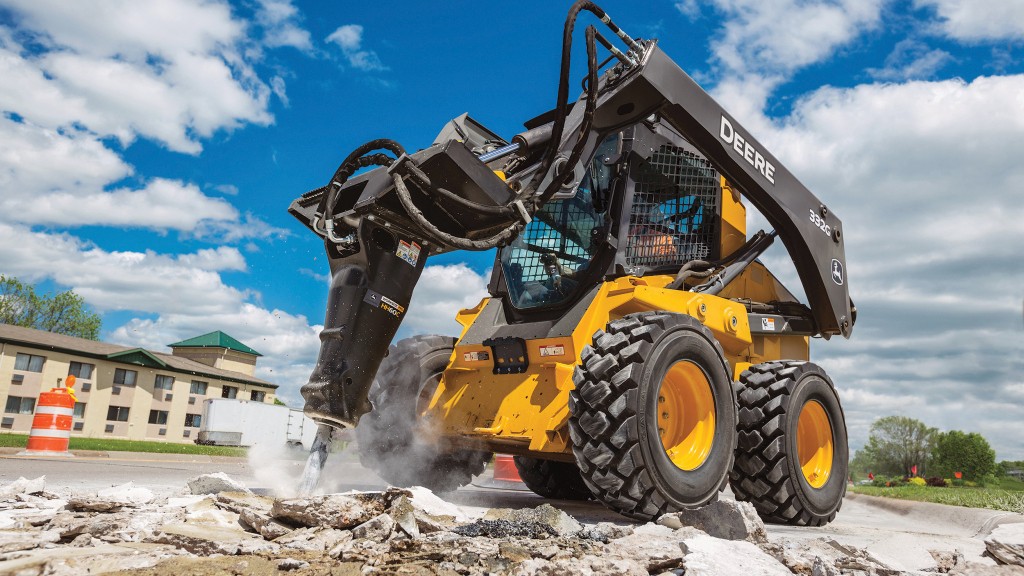Demolition work requires power, precision, and the ability to adapt to a variety of job site conditions. While many think of large bulldozers or wrecking balls when it comes to tearing things down, skid steers play a crucial role in demolition—especially on smaller job sites or when controlled deconstruction is needed.
Known for their compact size and versatility, skid steers are some of the most practical machines for demolition contractors. Whether you own your equipment or take advantage of affordable skid steer rentals, this machine can handle everything from concrete removal to interior strip-outs.
Why Skid Steers Are Ideal for Demolition
Demolition projects vary widely in size and scope. Skid steers offer the flexibility to tackle everything from tight indoor jobs to light structural teardowns. Their power-to-size ratio makes them especially useful in settings where larger equipment might be too cumbersome or damaging.
Key Benefits for Demolition Work:
- Compact footprint: Easily fits into residential lots, alleyways, and interior spaces.
- Maneuverability: Tight turning radius allows for movement in confined areas.
- Attachment-ready: A wide range of attachments makes skid steers incredibly adaptable.
- Speed and efficiency: High power-to-weight ratio enables fast removal of materials.
These qualities make skid steers indispensable for demolition contractors who need mobility, speed, and precision all in one machine.
Types of Demolition Projects Suited for Skid Steers
Skid steers can be used in many different types of demolition jobs. They’re not always the lead machine, but they often do the bulk of the work once major structural elements are down. Here are some common use cases:
1. Interior Demolition
For commercial or residential remodels, contractors often need to remove drywall, flooring, non-load-bearing walls, or fixtures. Skid steers can navigate hallways and entryways to haul debris or even break up flooring using specialized attachments.
2. Concrete and Asphalt Removal
Breaking up driveways, sidewalks, or interior slabs? Skid steers equipped with hydraulic breakers or cold planers can make fast work of it. They can then scoop and transport heavy chunks of concrete out of the work area.
3. Residential Structure Teardowns
When tearing down garages, sheds, or small homes, skid steers can push in walls, lift debris, and transport materials to dumpsters or designated disposal zones.
4. Fire or Storm Damage Cleanup
In post-disaster situations, time is of the essence. Skid steers are often used to clear out damaged materials, knock down weakened walls, and quickly remove rubble so that reconstruction can begin.
5. Selective Demolition
Not every demo job involves total destruction. Some projects require precise removal of specific features like chimneys, porches, or facades. Skid steers make selective demolition easier and safer.
Must-Have Attachments for Demolition Work
The true power of a skid steer in demolition comes from its ability to work with a range of specialized attachments. Depending on the job, contractors can swap out tools in minutes to move from breaking to hauling to leveling.
Common Demolition Attachments:
- Hydraulic Breakers: For breaking through concrete, brick, and other tough materials.
- Grapple Buckets: Perfect for picking up and removing large pieces of debris.
- Cold Planers: Used for grinding down asphalt or concrete surfaces.
- Demolition Shears: Ideal for cutting through metal beams and pipes.
- 4-in-1 Buckets: These can be used to push, pull, scoop, and clamp—very helpful on variable terrain.
When using affordable skid steer rentals, be sure to ask about available attachments. Having the right tools can make a major difference in how efficiently you can get the job done.
Safety Considerations During Demolition
Demolition comes with inherent risks, and adding uneven terrain, collapsing materials, or tight workspaces only increases the danger. Operators must be well-trained and familiar with both the job site and the equipment.
Safety Tips for Skid Steer Operators:
- Always wear seat belts and close the safety bar before operation.
- Never operate near unstable structures without proper support.
- Use low speeds in confined or debris-filled areas.
- Check for hidden hazards, such as rebar, electrical lines, or underground utilities.
- Make sure attachments are securely fastened before use.
Even experienced operators should revisit safety procedures regularly. When working with rented equipment, always perform a pre-use inspection and ensure that the machine is in good condition.
How to Maximize Efficiency on a Demolition Job
Time is money, especially in demolition. To get the most from your skid steer on the job, careful planning and strategic use of attachments can go a long way.
Tips for Boosting Productivity:
- Start with a clear demo plan: Identify which attachments you’ll need and when.
- Stage debris containers and trucks nearby: This reduces hauling time.
- Use smaller buckets indoors or in tight quarters: It’s safer and faster.
- Group tasks by attachment: Do all the breaking first, then all the hauling, to minimize changeover time.
If you’re using affordable skid steer rentals, look for providers that allow for flexible rental periods. Having equipment longer than needed increases costs, but not having it long enough can delay a project.
When to Rent Instead of Buy
Owning a skid steer might make sense for large or ongoing projects, but many contractors rely on rentals for specific demolition jobs. Renting gives you access to up-to-date machines and attachments without the long-term cost and maintenance responsibilities.
Renting is Ideal If You:
- Only need the equipment for a short-term project
- Want to test a specific model before purchase
- Need specialized attachments that you don’t use often
- Don’t want to deal with storage or maintenance
Working with a reputable rental company also means you can usually access the newest models and attachments with improved safety features and performance.
Final Thoughts
From clearing debris to breaking concrete, skid steers are a vital part of demolition work. Their small size, maneuverability, and attachment flexibility allow them to take on a wide range of tasks—even in places where larger equipment simply can’t fit.
Whether you own your machine or rely on affordable skid steer rentals, understanding how to use this equipment effectively can make your demolition projects faster, safer, and more efficient. The key is preparation—choosing the right attachments, planning your workflow, and operating with safety and precision in mind.
As the demand for smarter, more adaptable machines continues to grow in the demolition industry, skid steers remain one of the most reliable choices for contractors looking to get more done in less time.





